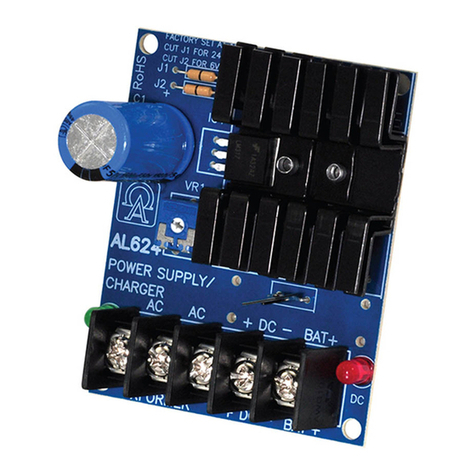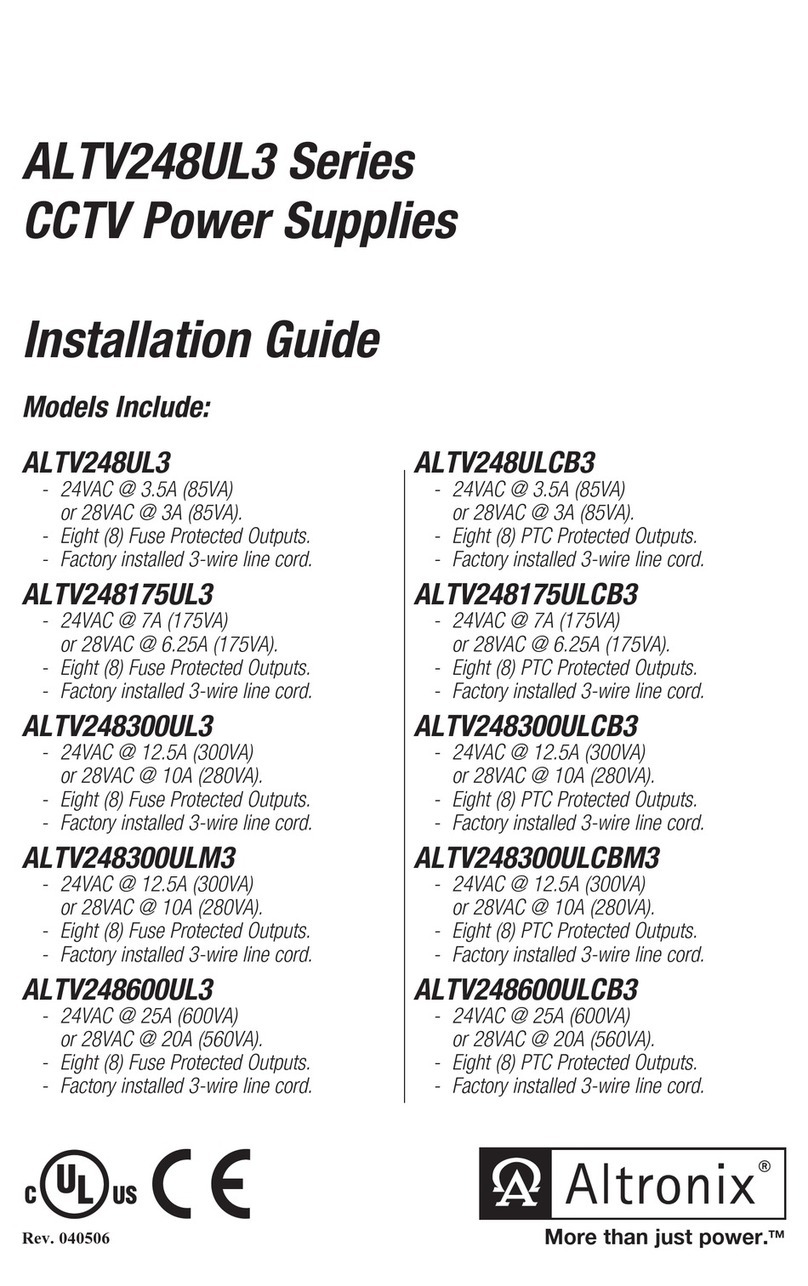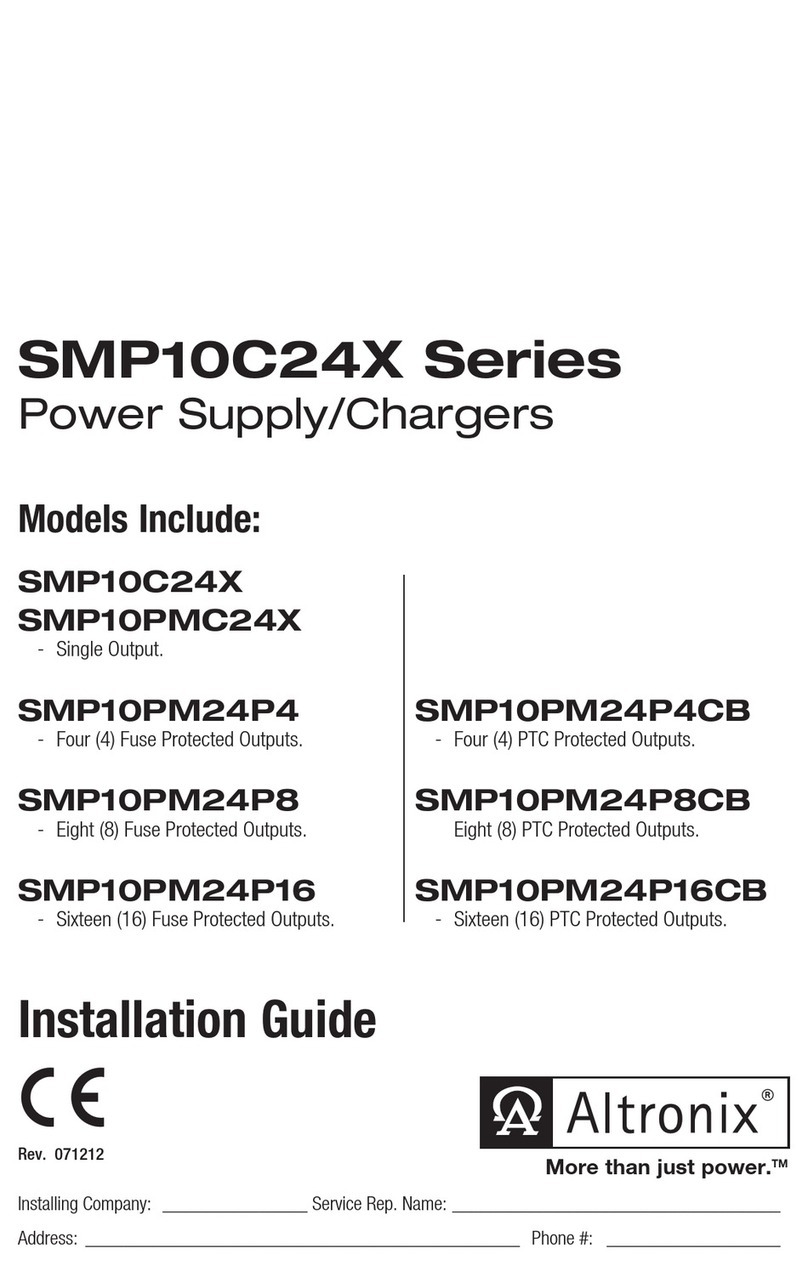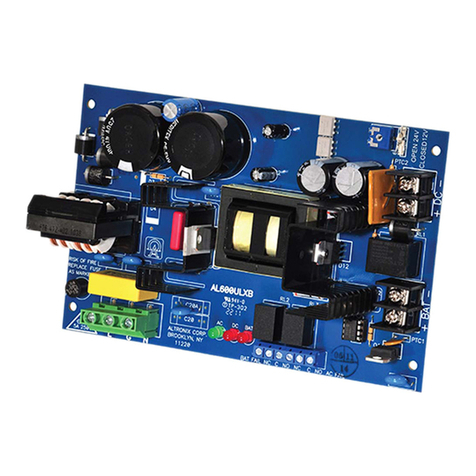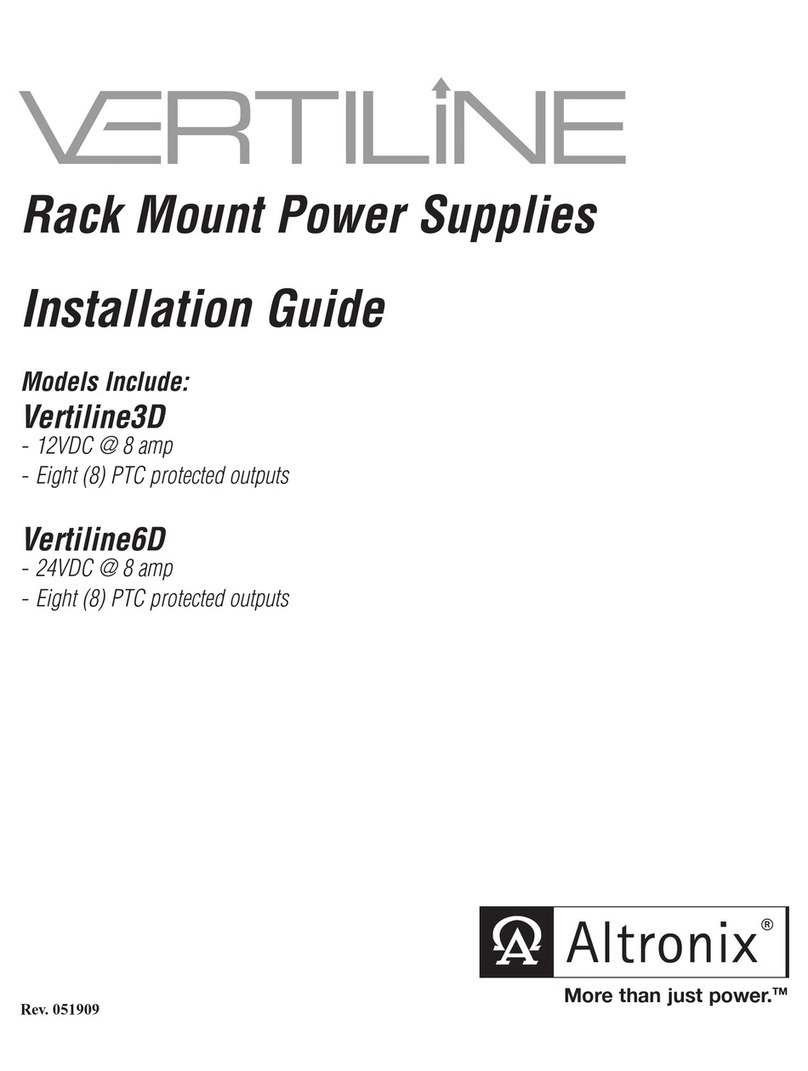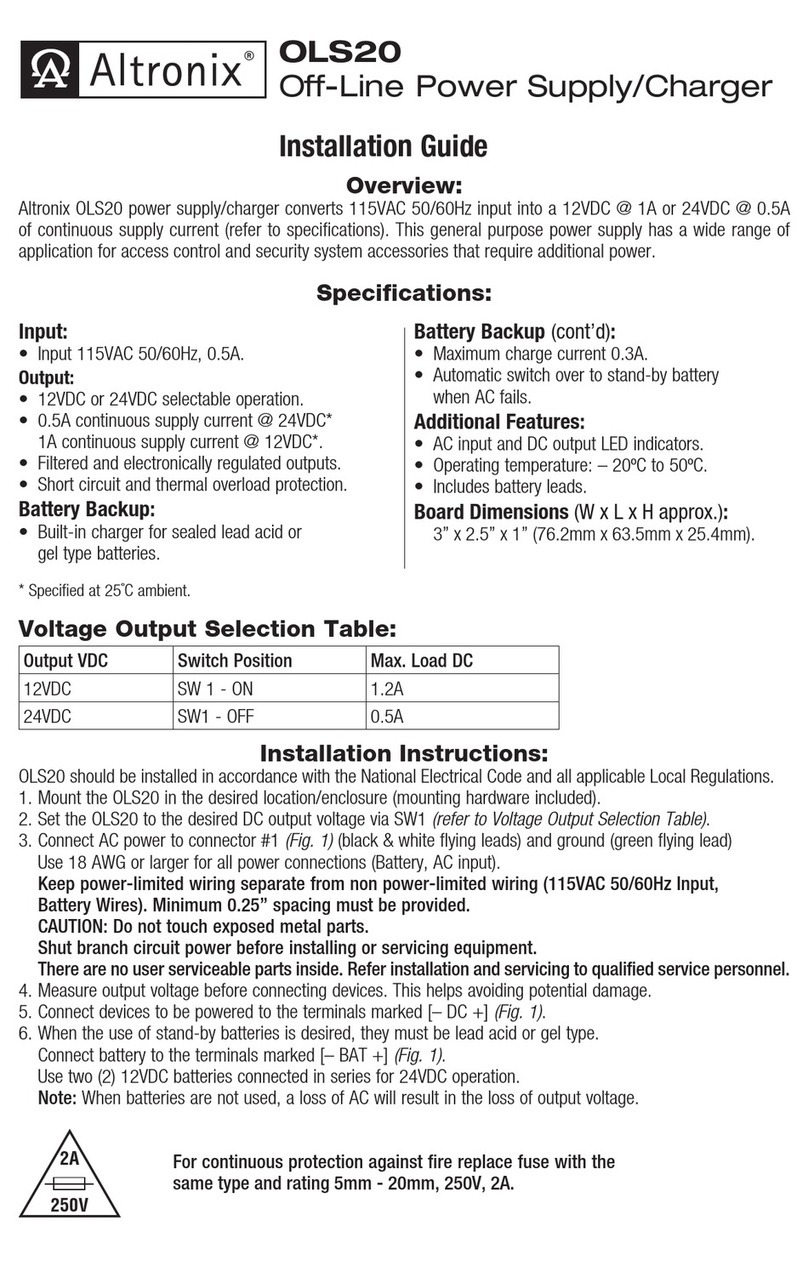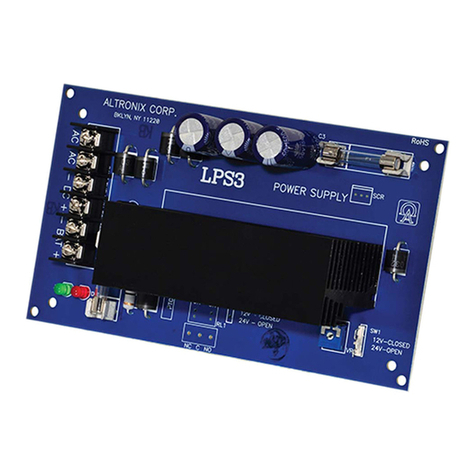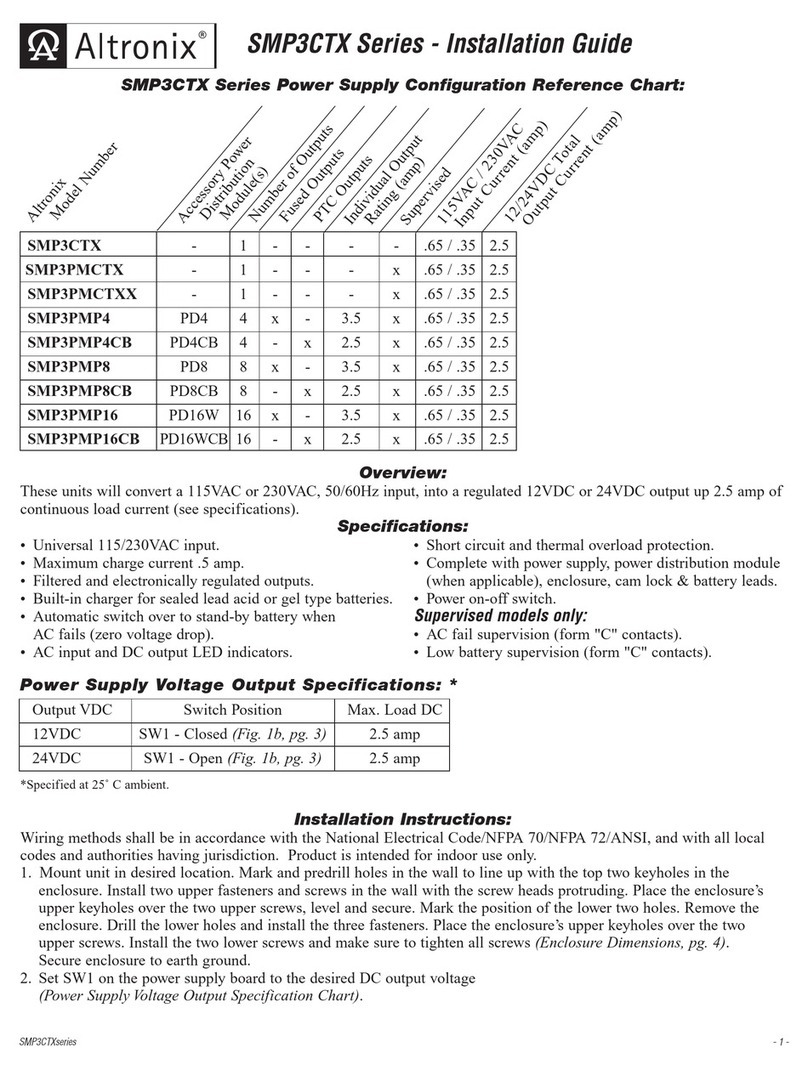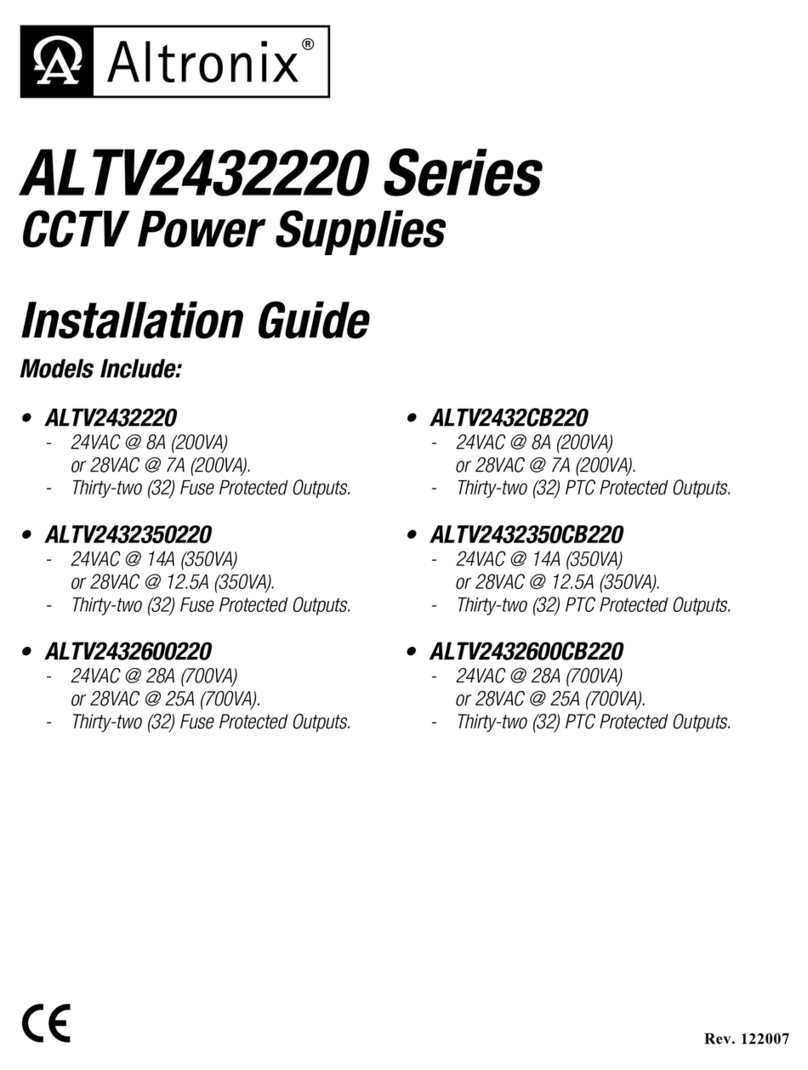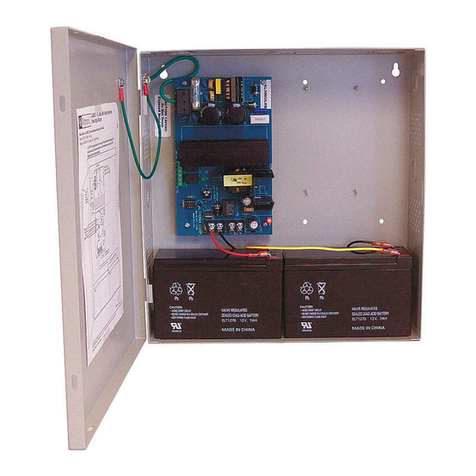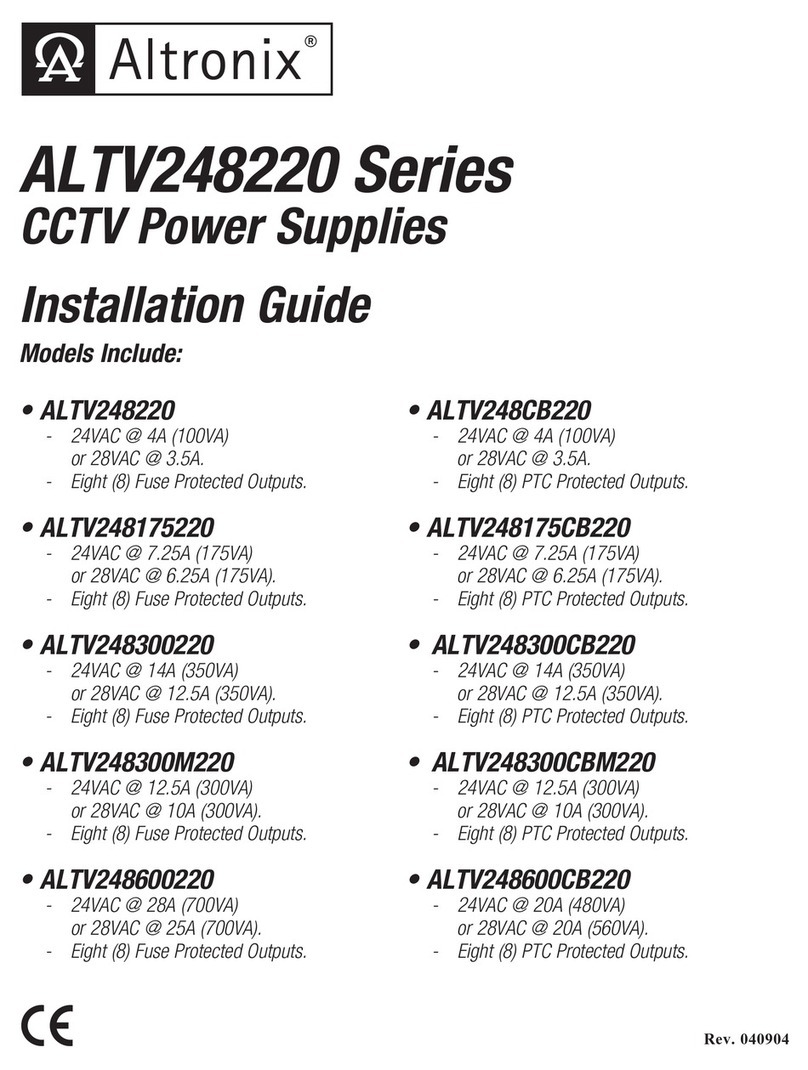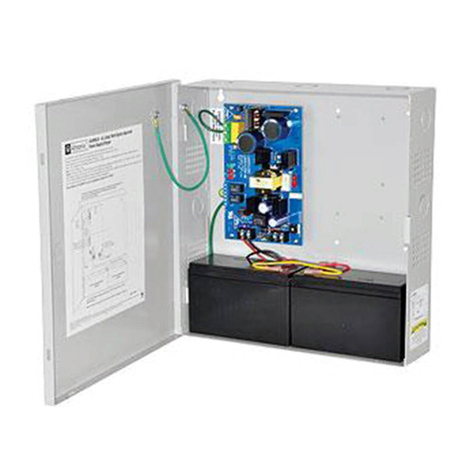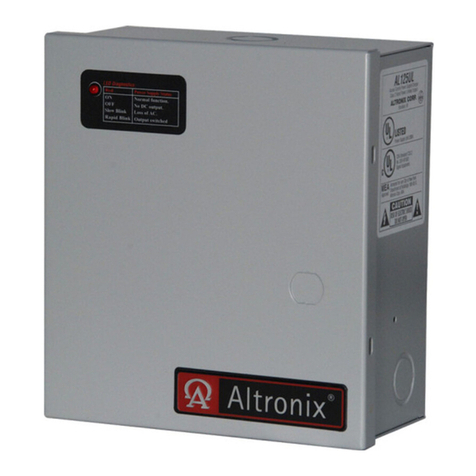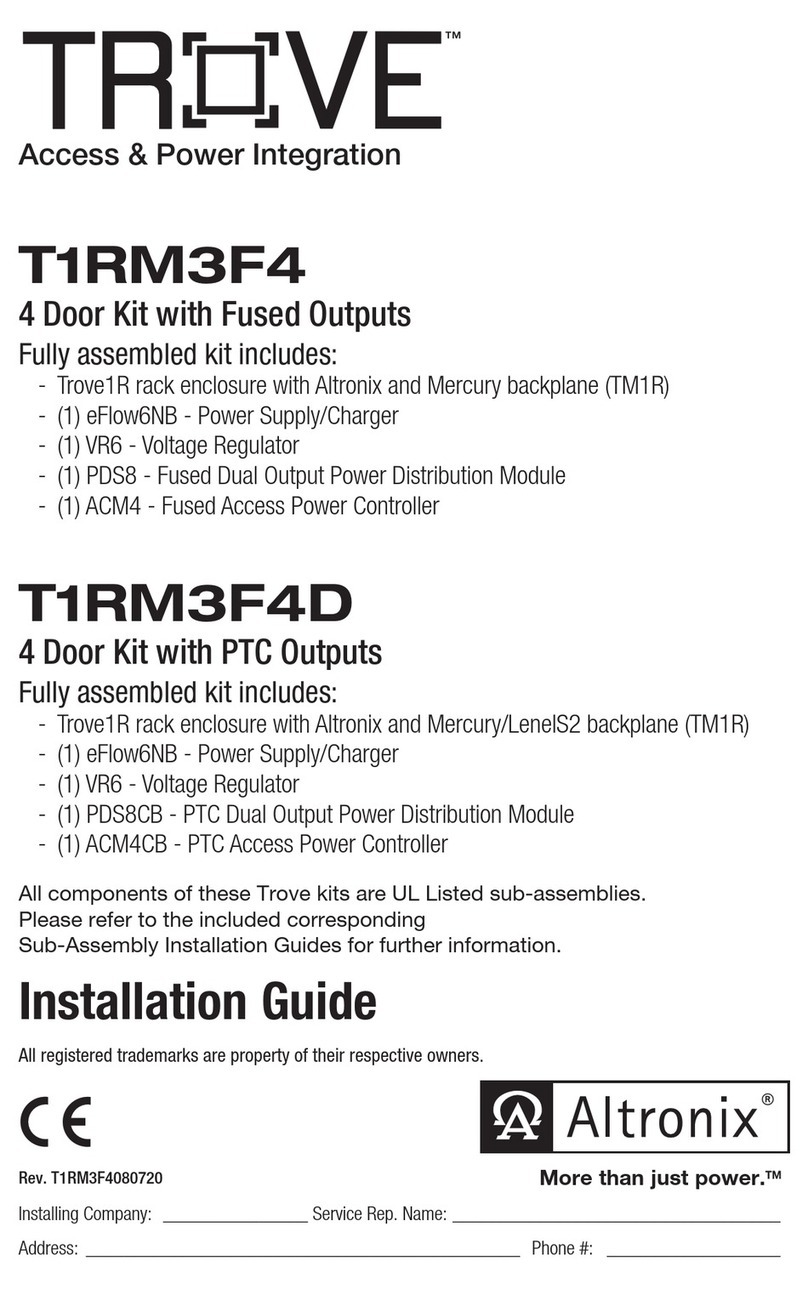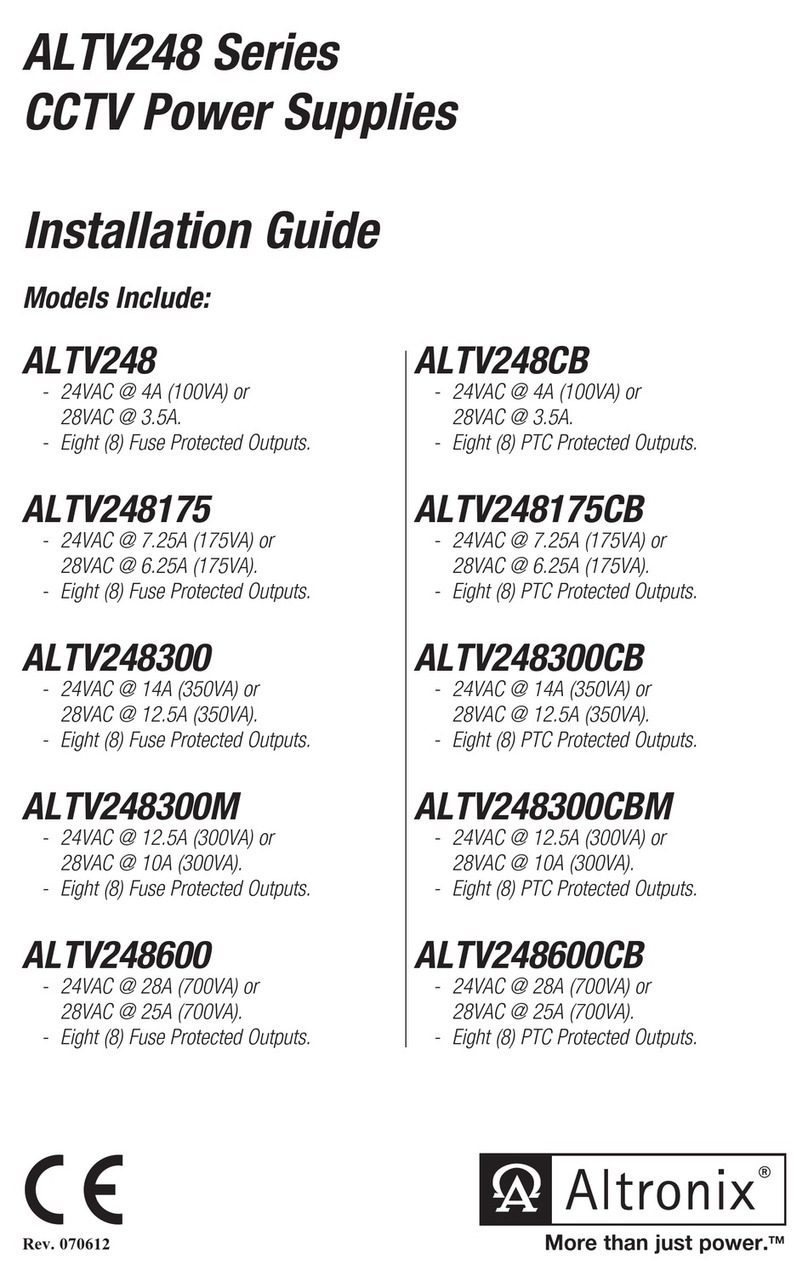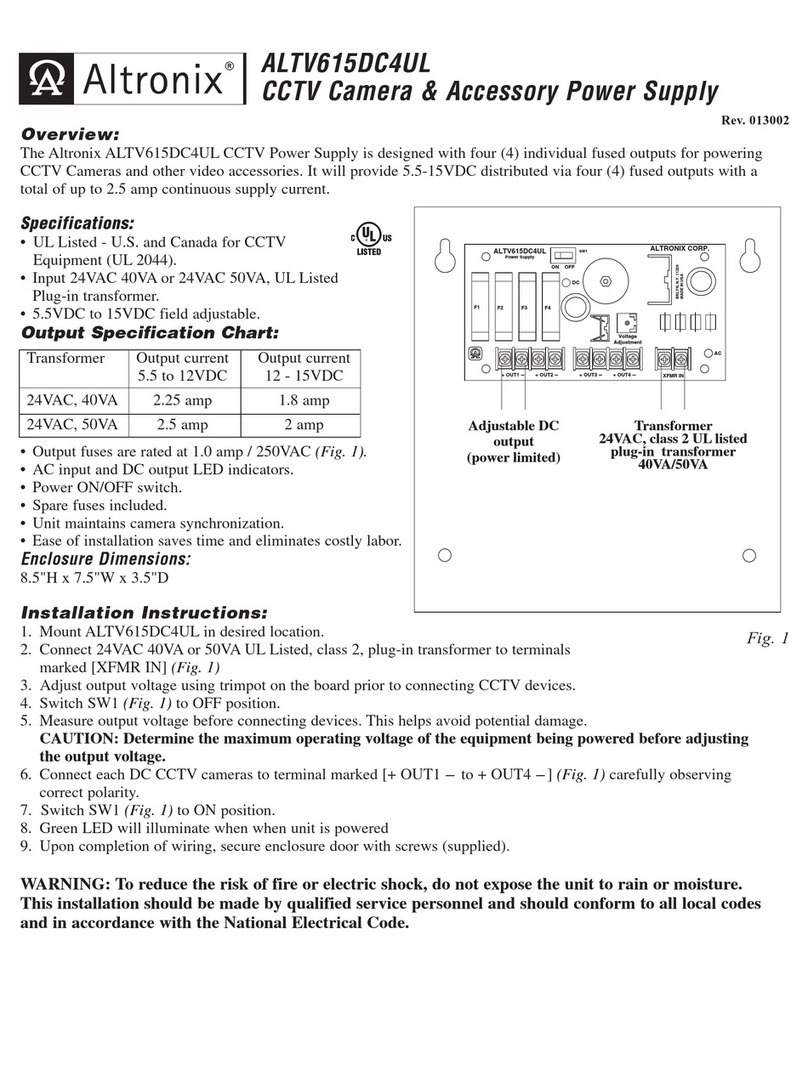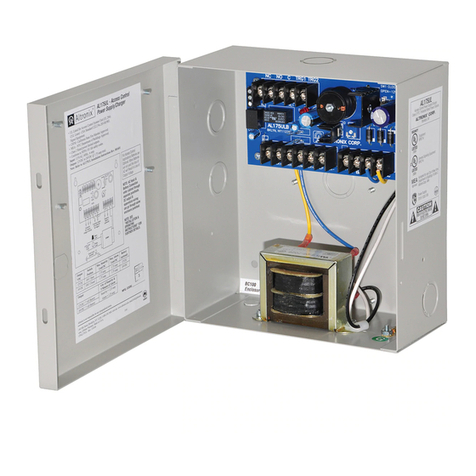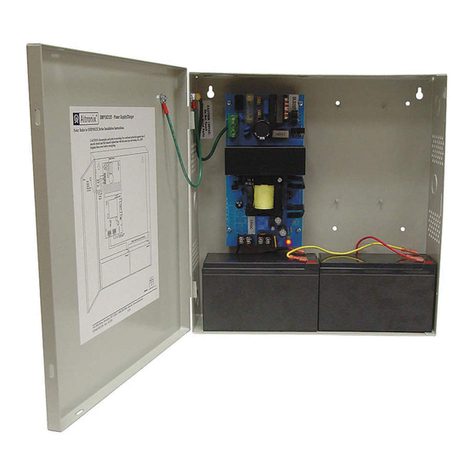
- 4 - AL300ULPDseries
Installation Instructions:
Wiring methods shall be in accordance with the National Electrical Code/NFPA 70/NFPA 72/ANSI, and with all local
codes and authorities having jurisdiction. Product is intended for indoor use only.
1. Mount unit in desired location. Mark and predrill holes in the wall to line up with the top two keyholes in the
enclosure. Install two upper fasteners and screws in the wall with the screw heads protruding. Place the enclosure’s
upper keyholes over the two upper screws, level and secure. Mark the position of the lower two holes. Remove the
enclosure. Drill the lower holes and install the two fasteners. Place the enclosure’s upper keyholes over the two
upper screws. Install the two lower screws and make sure to tighten all screws (Enclosure Dimensions, pg. 7,8).
Secure enclosure to earth ground.
2. Set the unit to the desired DC output voltage by setting SW1 (Fig. 1b, pg. 3) to the appropriate position
(Power Supply Output Specification Chart, pg. 3).
3. Secure cabinet to earth gourd. Connect AC power (115VAC / 60 Hz to terminals marked [L, G, N] (Fig. 1, pg. 3).
Use 14 AWG or larger for all power connections (Battery, DC output, AC input).
Use 22 AWG to 18 AWG for power limited circuits (AC fail/Low Battery reporting).
Keep power limited wiring separate from non-power limited wiring (115VAC / 60Hz Input, Battery Wires).
Minimum .25” spacing must be provided.
4. Measure output voltage before connecting device. This helps avoid potential damage.
When servicing the unit, AC mains should be removed.
5. Connect devices to be powered to terminal pairs 1 to 4 marked [1P & 1N thru 4P & 4N] (Fig. 2a & 2b, pg. 6) or
1 to 8 marked [1P & 1N thru 8P & 8N] (Fig. 3a & 3b, pg. 6) carefully observing correct polarity.
6. For Access Control applications, batteries are optional. When batteries are not used a loss of AC will result in the
loss of output voltage. When the use of stand-by batteries is desired, they must be lead acid or gel type.
Connect one (1) 12VDC battery to the terminals marked [+ BAT -] for 12VDC operation. Use two (2) 12VDC
batteries wired in series for 24VDC operation.
7. Connect appropriate signaling notification devices to terminals marked [AC FAIL & BAT FAIL] (Fig. 1a, pg. 3)
supervisory relay outputs.
Note: When used in fire alarm, burglar alarm or access control applications, “AC Fail” relay must be used to
provide a visual indication of AC power on.
8. Please insure that the cover is secured with the provided key lock.
LED Diagnostics:
AL300ULXB - Power Supply Board
Red (DC) Green (AC) Power Supply Status
ON ON Normal operating condition.
ON OFF Loss of AC, Stand-by battery supplying power.
OFF ON No DC output.
OFF OFF Loss of AC. Discharged or no stand-by battery. No DC output.
